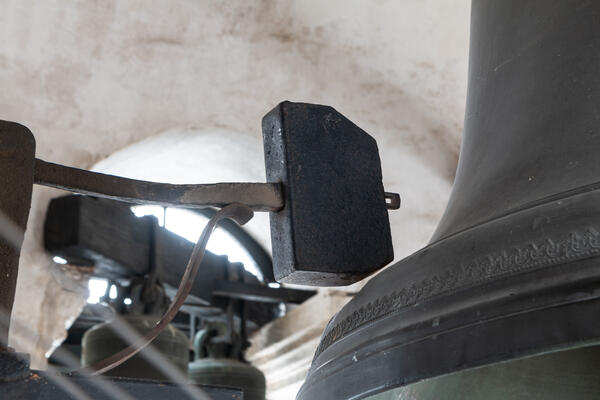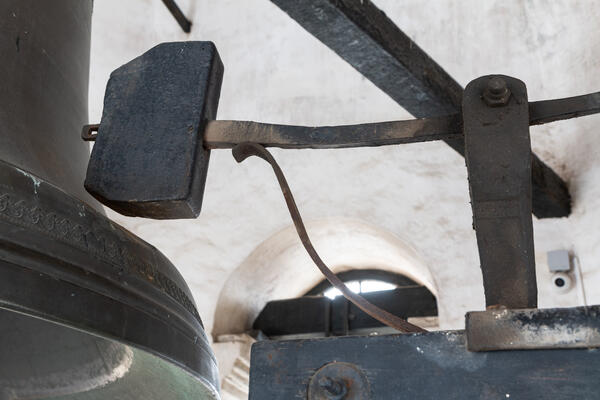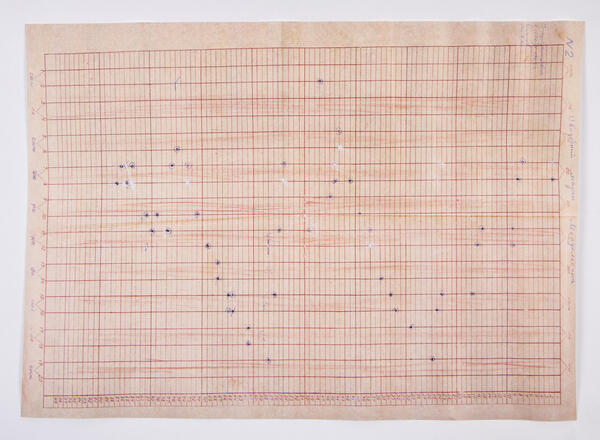The alarm bell is located on the second octagonal tier of the tower; it was cast from bronze by workers of the Nevyansk plant. The bell was originally intended “to warn against fire hazards and to summon people to work.” Currently, the large bell serves as a sentry; it is the one that strikes the hours. The bell weighs 1 ton 50 kilograms 800 grams. The diameter and height of the bell is 1 meter 21 centimeters. The external hammer of the alarm bell was made during the restoration of the clock mechanism of the Nevyansk Tower in the 1970s.
Along the perimeter of the entire tier, in the openings, there are 10 English bells, with the marks of the master who cast them and the Latin inscriptions reading “Richard Phelps Londini Fecit 1730” (“Richard Phelps made in London 1730”). Richard Phelps was a famous English craftsman, who established a foundry in east London a long time ago. He cast bells for St. Paul’s Cathedral in London. Together with the famous English clockmaker Langley Bradley, he produced the chimes for this cathedral. It is likely that Langley Bradley made the Nevyansk chimes, but it is not yet possible to prove this: the entire archive at the ancient Whitechapel foundry in London, dating to the period before 1837, burned down in a fire. This factory has remained and still casts bells.
The bells of the Nevyansk Tower were cast from copper; they were brought to the Nevyansk plant together with the clock. The bells also have handwritten inscriptions made in Old Church Slavonic letters and numbers on hot metal, which indicate the weight of the bells. The inscriptions were apparently made by Russian craftsmen, whom the owner of the Nevyansk plant, Akinfiy Demidov, sent to England to fetch the chiming clock.
In the early 1970s, the Ural local historian, Candidate of Geological and Mineralogical Sciences S.A. Lyasik studied the composition of the Nevyansk Tower bells. He sent samples of metal from the top of the bell for chemical and spectral analysis to the laboratories of the Berezovsky mine of the Uralzoloto plant and the Ural Geological Department. The research revealed that the metal included 76% copper, 23% tin and 1% impurities. The impurities were represented by nickel, cobalt, chromium, zinc, lead, silver, gold, bismuth, antimony and arsenic, but there were no impurities of vanadium, strontium, manganese, characteristic of Western Ural copper ores. This indicates the “address” of the copper. S.A. Lyasik concluded that the large bell of the Nevyansk Tower was cast from Altai copper.






